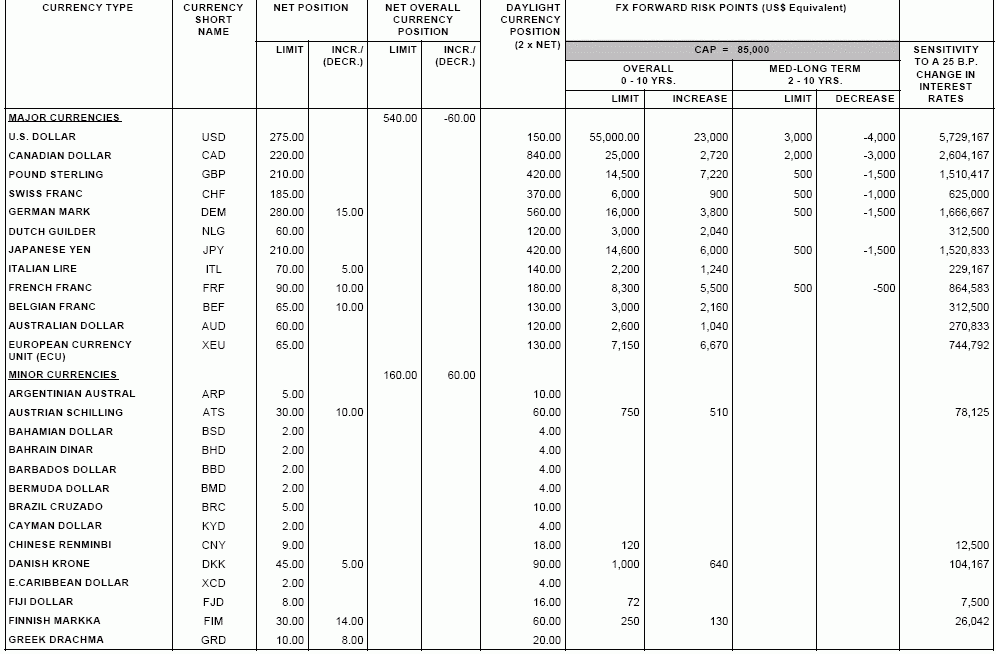Foreign Exchange Risk Mananagement Procedures
Category: Forex, Risk Management in Banking
In this area there is considerable difference in current practice. This can be explained by the different franchises that coexist in the banking industry. Most banking institutions view activity in the foreign exchange market beyond their franchise, while others are active participants. The former will take virtually no principal risk, no forward open positions, and have no expectations of trading volume. Within the latter group, there is a clear distinction between those that restrict themselves to acting as agents for corporate and/or retail clients and those that have active trading positions.
The most active banks in this area have large trading accounts and multiple trading locations. And, for these, reporting is rather straightforward. Currencies are kept in real time, with spot and forward positions marked-to-market. As is well known, however, reporting positions is easier than measuring and limiting risk.
Here, the latter is more common than the former. Limits are set by desk and by individual trader, with monitoring occurring in real time by some banks, and daily closing at other institutions. As a general characterization, those banks with more active trading positions tend to have invested in the real-time VaR systems discussed above, but there are exceptions.
Limits are the key elements of the risk management systems in foreign exchange trading as they are for all trading businesses. As Table 10 illustrates by example, it is fairly standard for limits to be set by currency for both the spot and forward positions in the set of trading currencies. At many institutions, the derivation of exposure limits has tended to be an imprecise and inexact science. For these institutions, risk limits are set currency-by-currency by subjective variance tolerance. Others, however, do attempt to derive the limits using a method that is analytically similar to the approach used in the area of interest rate risk.
Even for banks without a VaR system in place, stress tests are done to evaluate the potential loss associated with changes in the exchange rate. This is done for small deviations in exchange rates as shown in Table 10, but it also may be investigated for historical maximum movements. The latter is investigated in two ways. Either historical events are captured, and worse-case scenario simulated, or the historical events are used to estimate a distribution from which the disturbances are drawn. In the latter case, a one or two standard deviation change in the exchange rate is considered. While some use these methods to estimate volatility, until recently most did not use covariability in setting individual currency limits, or in the aggregating exposure across multiple correlated currencies.
Incentive systems for foreign exchange traders are another area of significant differences between the average commercial bank and its investment banking counterpart. While, in the investment banking community trader performance is directly linked to compensation, this is less true in the banking industry. While some admit to significant correlation between trader income and trading profits, many argue that there is absolutely none. This latter group tends to see such linkages leading to excess risk taking by traders who gain from successes but do not suffer from losses. Accordingly, to their way of thinking, risk is reduced by separating foreign exchange profitability and trader compensation.

